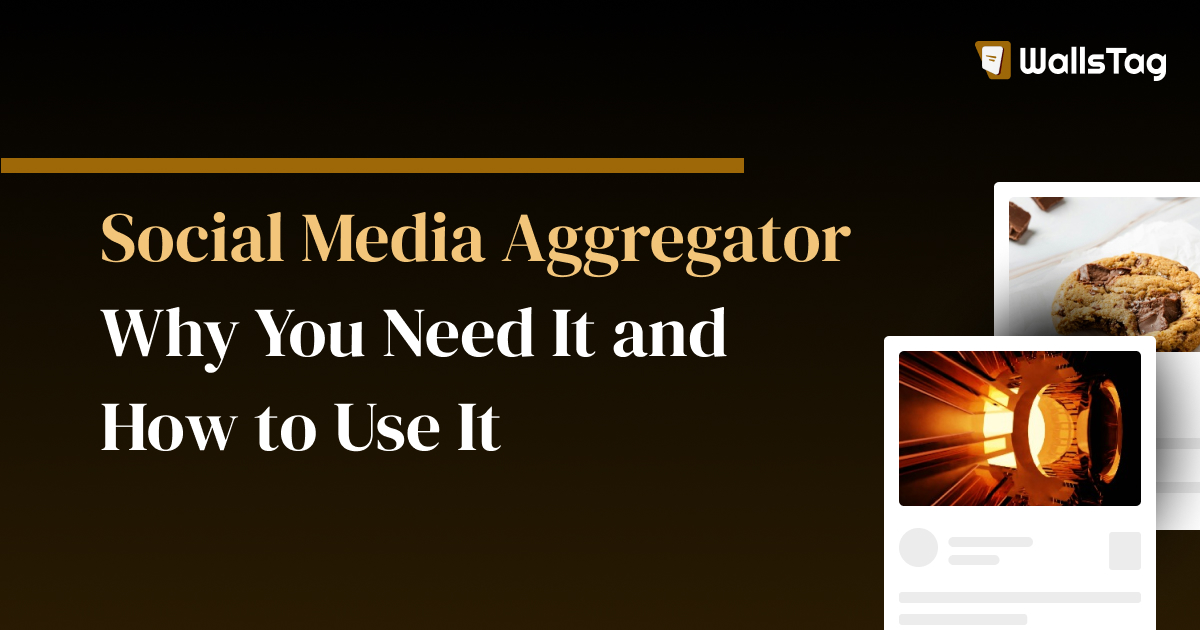A social media aggregator is a powerful tool that allows you to collect, curate, and display content from various social media platforms in one centralized location. Here’s why you need a social media aggregator and how to use it effectively:
Why You Need a Social Media Aggregator:
- Centralized Content Management: A social media aggregator helps you consolidate content from multiple social media platforms (such as Facebook, Twitter, Instagram, YouTube, etc.) into one dashboard, making it easier to manage and monitor all your social media activity in one place.
- Enhanced Brand Visibility: By displaying user-generated content (UGC) alongside your own content, a social media aggregator can help increase brand visibility and credibility. It allows you to showcase customer testimonials, reviews, and posts, which can attract new followers and engage your audience.
- Increased Engagement: Social media aggregators encourage audience engagement by showcasing real-time updates and interactions from various social media channels. By curating and displaying dynamic content, you can keep your audience engaged and encourage them to interact with your brand.
- Event Promotion: If you’re hosting an event or conference, a social media aggregator can be a valuable tool for aggregating posts, photos, and videos shared by attendees in real-time. It creates a sense of community and excitement around the event, while also providing valuable social proof.
- Content Curation and Discovery: Social media aggregators help you discover relevant content related to your industry, brand, or interests. By monitoring hashtags, keywords, or specific accounts, you can curate and share valuable content with your audience, saving time on content creation.
How to Use a Social Media Aggregator:
- Choose the Right Platform: Select a social media aggregator platform that meets your needs and budget. Some popular options include Taggbox, Walls.io, TINT, and EmbedSocial.
- Connect Your Social Media Accounts: Connect your desired social media accounts to the aggregator platform using their API or authentication process. This allows the aggregator to access and aggregate content from those accounts.
- Customize Your Aggregator: Customize the appearance and layout of your social media aggregator to match your brand’s aesthetics and messaging. Choose colors, fonts, and styles that align with your brand identity.
- Set Up Filters and Moderation: Use filters and moderation tools to ensure that only relevant and appropriate content is displayed on your aggregator. Filter out spam, profanity, or irrelevant posts to maintain a positive brand image.
- Embed Your Aggregator: Once configured, embed your social media aggregator on your website, blog, or digital signage. Most aggregator platforms provide embeddable widgets or code snippets that you can easily add to your web pages.
- Promote Your Aggregator: Promote your social media aggregator across your various marketing channels to encourage engagement and participation. Share it on social media, include it in email newsletters, and feature it prominently on your website.
- Monitor Performance and Engagement: Track the performance of your social media aggregator using built-in analytics and reporting tools. Monitor metrics such as engagement, reach, and click-through rates to evaluate the effectiveness of your aggregator and make any necessary adjustments.
By leveraging a social media aggregator effectively, you can streamline your social media management efforts, increase brand visibility, and enhance audience engagement across multiple channels.
